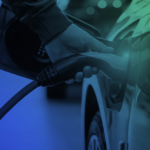Auto Retailing: Six Predictions for the Future
The automotive industry is transforming, and so too are the demands and priorities of consumers, businesses, and dealerships alike.
The automotive industry is transforming, and so too are the demands and priorities of consumers, businesses, and dealerships alike. Gone are the days of the traditional buying experience. Now, it’s all about contactless buying, omnichannel solutions, and of course, the rise of electric vehicles. In this article, we dive into six predictions for the future of auto retailing. We also delve into what the car business looks like in 2022 and what the future holds for dealerships around the world.
What does the future hold for the retail of cars?
The future for the retail of cars is vastly different than that of the past. Technology has spurred all kinds of innovations that have permanently transformed automotive retailing. The top six trends that will define the future of automotive retail in North America are as follows.
The Growth of Electric Vehicles
Our first prediction? The rise of electric vehicles will outpace anything we’ve seen before. While the overall new-vehicle market slowed down in 2020 and 2021, the market for electric vehicles skyrocketed, with hybrids, plug-in hybrids, and full battery electric vehicles being the cars of choice. This new cohort of buyers came about because of the increase in eco-friendly vehicles hitting the market. Although Tesla still dominates the EV landscape, new models from budget-friendly brands like Hyundai, Kia, Volvo, Ford, and Volkswagen undoubtedly helped drive this surge. The rise in gas prices in 2022 impacted this upward trajectory. Plus, with some of the biggest automakers in the world pledging to introduce all-electric fleets over the next decade, it’s clear that the electric vehicle market is going to continue to rise.
Part of this turn towards electric vehicle production means far more choices for consumers. Those who can’t afford a Tesla will now have a more affordable option in the 2022 Nissan Leaf or 2022 Hyundai Kona Electric. Meanwhile, those who prefer pickup trucks to sedans or SUVs will soon have several choices in the form of two new all-electric pickup trucks, the Rivian RT1 pickup and the Ford F-150 Lightning.
One last catalyst for the growth of electric vehicles is government subsidies and incentives. Federal and local governments across the United States and Canada have introduced programs that make buying an electric vehicle more economical than ever before. This is a concerted effort on behalf of these governments to bring EVs into the mainstream to curb the effects of climate change.
While the switch to electric isn’t going to happen overnight (especially with supply chain shortages), it’s clear that consumers all over the world are prioritizing electric vehicles more than ever before. And if things continue as they have been, with more affordable EV options hitting the market and a reliable network of charging stations being built around the world, it’s clear that the rise of the electric vehicle sector will define the short and long-term future of auto retailing.
A Rise in Direct-to-Consumer Vehicle Sales
A second prediction for the future of auto retailing is a rise in direct-to-consumer vehicle sales. Tesla was one of the first automakers to sell their cars directly to the public, without dealerships. And in 2021, Tesla delivered over 300,000 vehicles to customers in the United States. After seeing the success of Tesla’s direct-to-consumer model, other automakers, like Lucid and Rivian, have opted to do the same, cutting out the middleman and selling their products directly to consumers. That said, the traditional dealership model isn’t going anywhere, especially as dealerships around the world begin to adopt digital automotive retailing platforms like taq’s one Platform. Consumers want efficiency and transparency more than ever before. And while a direct-to-consumer model can provide that, so too can dealerships that embrace technology. So, while dealerships likely aren’t going anywhere, at least in the short term, we do predict a rise in direct-to-consumer vehicle sales.
Increased Personalization
Increased personalization in the buying process is our third auto retailing prediction. More than ever before, consumers want a car shopping experience that feels tailored to them. Luckily, technology has made greater personalization possible. Dealerships that adopt digital automotive retailing solutions can leverage them to create a more efficient, user-friendly, and customized shopping experience. For example, consumers can now visit a dealer’s website before ever stopping by in person and shop for the car they want using filters like make, model, year, price, and type. When they click on a vehicle model, they are greeted with transparent, upfront pricing. They can also begin the vehicle buying process online by filling out a credit application or finding out which rebates or incentives they’re eligible for. Although some dealerships allow consumers to buy a vehicle entirely online, many consumers still prefer to complete the process in person by visiting the dealership and taking the car out for a test drive. Should they decide to abandon their online search in favour of an in-person experience, the dealership can pull up the customer’s search history and credit application before they arrive, fostering an enhanced, personalized buying experience like never before. The more personalized auto retail becomes, the more loyalty and trust it will create among consumers.
Contactless Buying Experience
Another prediction for the future of auto retailing is a turn towards contactless buying. The rise in contactless buying was precipitated by the pandemic when “at-home services” for cars started to increase. It’s becoming clear that a large portion of customers wants to be able to shop for cars online. And not only start the car shopping process online but finish it, just as they would purchase other retail items online. Consumers are completing more car-buying steps digitally than ever before. And as a result, customer satisfaction has improved. Coupled with the fact that consumer preference for online shopping is only predicted to increase means that contactless buying is likely here to stay.
Dealerships that have embraced the contactless buying experience are likely to fare better. In fact, many have already started offering virtual meetings with dealers, car delivery services, and video chat or texting as a leading form of communication. It’s important to note that the rise of contactless buying in auto retailing is not intended to replace car salespeople. Rather, it’s to offer another option to consumers. It complements the traditional buying process and can work in tandem with it if executed correctly.
Omnichannel Solutions
The second to last prediction for the future of auto retailing is the rise of omnichannel solutions. Omnichannel solutions combine hundreds or even thousands of unique touch points into one user-friendly interface. Previously, the car buying experience was estimated to consist of roughly 900 unique touch points. But this is not only difficult to track for the dealership, but it’s much more complicated and confusing for the customer. Luckily, there’s a solution: omnichannel experiences. Omnichannel digital automotive retailing platforms instantly connect all these touch points, ranging from advertising, marketing, and sales to scheduling and communication. Best of all, it seamlessly integrates the online car shopping experience with the in-person dealership experience. It ultimately makes the car shopping process simpler and more efficient for both the consumer and the dealer.
Vehicle Supply Chain Issues Will Slowly Improve
Vehicle supply chain issues will slowly be resolved. The hallmark of the automotive industry in 2021 was a tight inventory caused by major supply chain disruptions. The pandemic led to serious shortages across the industry, which translated to lower prediction levels. One specific shortage that rocked the industry and affected the electric vehicle sector was a shortage of chips. There was a global chip supply shortage that drastically impacted almost all automakers, including those who exclusively produce electric vehicles, such as Tesla. As a result, auto brands were forced to come up with creative ways to overcome this shortage. For example, Ford and General Motors struck a deal with a U.S.-based semiconductor company called GlobalFoundries to develop computer chips.
While it may take time, supply chain issues are already improving, with many experts predicting the worst is behind us. That said, there are a few other conflicts to be aware of as we look to the future of the supply chain—namely, the war in Ukraine. The conflict is predicted to reduce global light-duty vehicle production in 2022.
What will the car business look like in 2023?
The car business is going to look increasingly digital in 2023. Modern auto dealers are embracing technology by implementing more automated and digital touch points. The most effective dealerships have introduced omnichannel digital automotive retailing solutions, creating an all-encompassing retail experience for consumers. While the vast majority of car buyers conduct their research online, many still prefer to visit a dealership at some point in the buying process, whether for the human element of speaking with an expert in person or to test drive a vehicle. Therefore, dealers who can seamlessly integrate their online and physical buying experiences will come out on top. Omnichannel digital retailing solutions allow dealers to do just that. Rather than having their online and in-person experience be two separate entities, they complement one another, allowing dealers to provide a “bricks and clicks” experience, as opposed to one that is exclusively brick and mortar or exclusively e-commerce.
An example of how an omnichannel solution in digital automotive retailing works is having your dealership website provide targeted content to engage consumers before guiding them to book an in-person appointment for a test drive or to complete their purchase at the dealership. In such a scenario, the consumer is engaging with the dealer’s online presence as well as their physical presence for a seamless buying experience.
Beyond the convenience and potential for increased profits that come with dealerships leveraging omnichannel digital automotive retailing solutions, there are several advantages to the consumer as well. Omnichannel solutions bring better customer service and increased speed to the car shopping experience, both of which are top priorities for consumers. For example, as dealerships continue to embrace digital automotive retailing in 2023, they can offer timely services to their customers, like automatic repair and maintenance, past ordering, and predictive inventory to speed up the repair process.
Will auto retail decline in the future?
While it is impossible to predict the future, data suggests that auto retail is only going to increase from here. Vehicle demand has risen significantly in the past year alone and is expected to remain robust, even with higher vehicle prices. Plus, thanks to the rise in electric vehicles, supply chain improvements, and the transformation of the automotive retail landscape thanks to contactless buying, greater personalization, and omnichannel solutions, we predict auto retail to be on an upwards trajectory.
Will auto dealerships continue to grow or decline?
Thanks to digital automotive retailing platforms like taq’s one Platform, auto dealerships have been revitalized. Digital automotive retailing has flipped the traditional dealership model on its head, allowing them to adapt to the present market. For this reason, auto dealerships will likely continue to grow; however, the way they operate may change. For example, some experts predict that auto dealership consolidation will become the dominant trend. Auto dealerships, many of which have seen record profits and vastly improved operational efficiency in the last few years, are looking to expand more than ever before. As a result of tight inventory caused by supply chain issues and rising costs, dealerships took a closer look at their competition and began to weigh the benefits of a larger operation. Consequently, we have already started to see larger dealership groups buying out small, private ones across North America, leading to a consolidation of the market. As dealerships consolidate into larger entities, they gain better access to capital, technology, and human resources. So, while the number of unique dealerships might decline, the size of dealerships and the transactions conducted at these dealerships is only predicted to grow.
Beyond dealership consolidation, the way auto dealerships are set up may also change in the future. For example, it is predicted by some that there won’t be as many cars in dealerships down the line. This has been, in part, facilitated by the rise in virtual reality and augmented reality. This technology allows consumers to “test drive” a vehicle from the comfort of their homes. Though virtual reality will never completely replace the in-person test drive experience, the improvements in this technology have made it possible to gain a realistic understanding of what it’s like to drive a vehicle or what the interior of a vehicle looks like without ever stepping foot in it. Plus, when shopping for a vehicle using virtual reality technology, the car can be completely customized. For example, if you want to see the car in a different colour, you can do so with one click of a button (the same goes for any other feature). In contrast, no physical dealership, even one with a high inventory, can offer this level of convenience or customization to customers. (Plus, minimizing the number of cars at dealerships can help dealers cut down on costs and may even allow them to occupy smaller lots.)
Speaking of customization, we predict that auto dealerships will need to offer greater customization to attract customers. What do we mean by this? With the rise of ride-sharing services like Uber and Lyft and the fast-paced, global lifestyles of many consumers, there is a growing need for multiple types of vehicles. For example, consumers might want a certain type of car for their everyday life, but a different one on the weekend or over the summer when they drive to the cottage frequently. But of course, one household doesn’t want to purchase a car for every situation or have to rent a car several times throughout the year. That’s where dealership customization comes in. Some experts predict that dealerships will start offering add-ons or packages to car purchases. For example, with the purchase of your everyday car, a dealership might have an option where the buyer can add a package that gives them access to a convertible in the summer or an SUV in the winter. This would allow the consumer to have a vehicle that suits their needs year-round.
At the end of the day, auto retailing has changed dramatically in recent years. And while there’s no telling for sure what the future of the industry holds, it’s clear that technology and digital automotive retailing have transformed the industry for the better. And because of it, the future of auto retailing is limitless.




